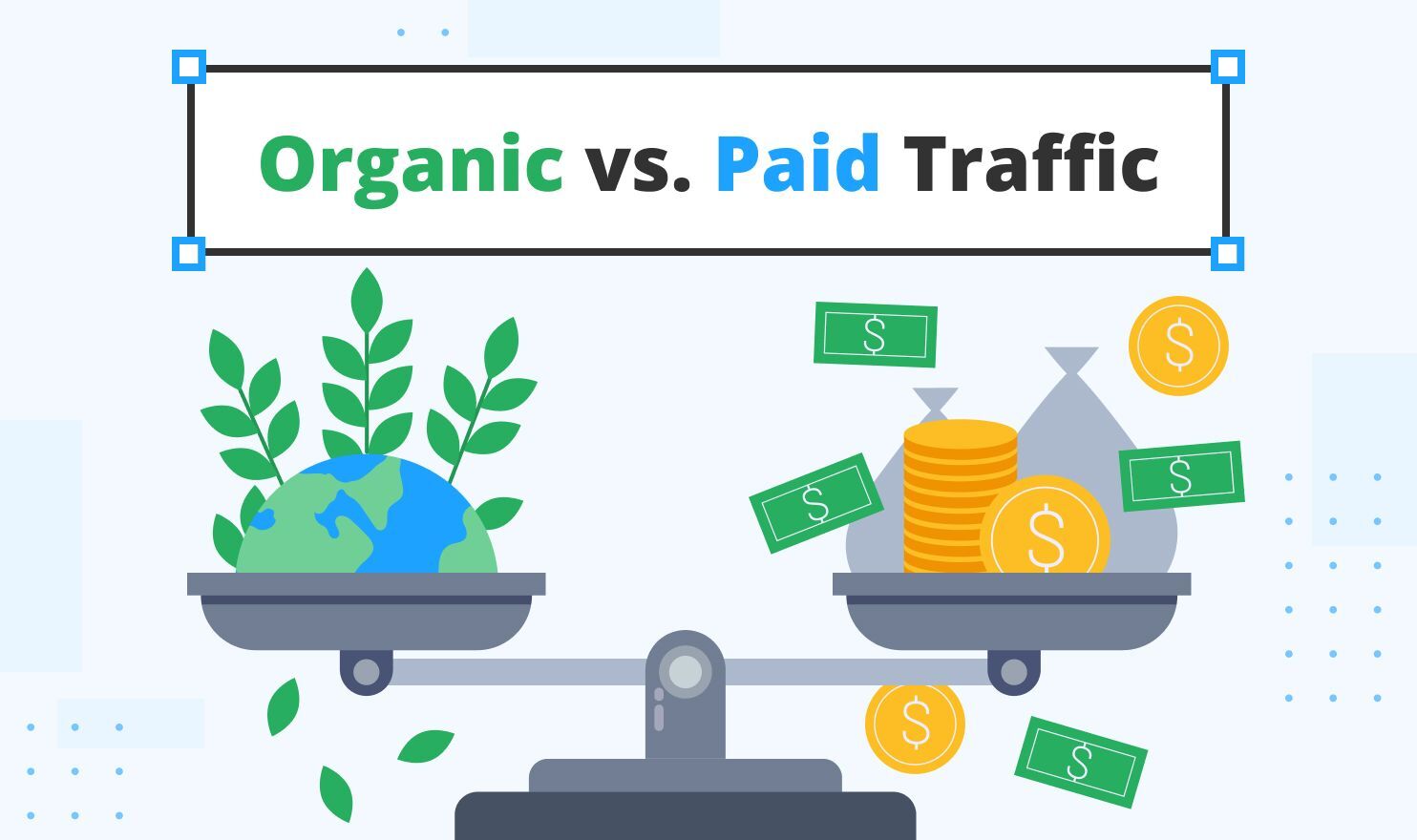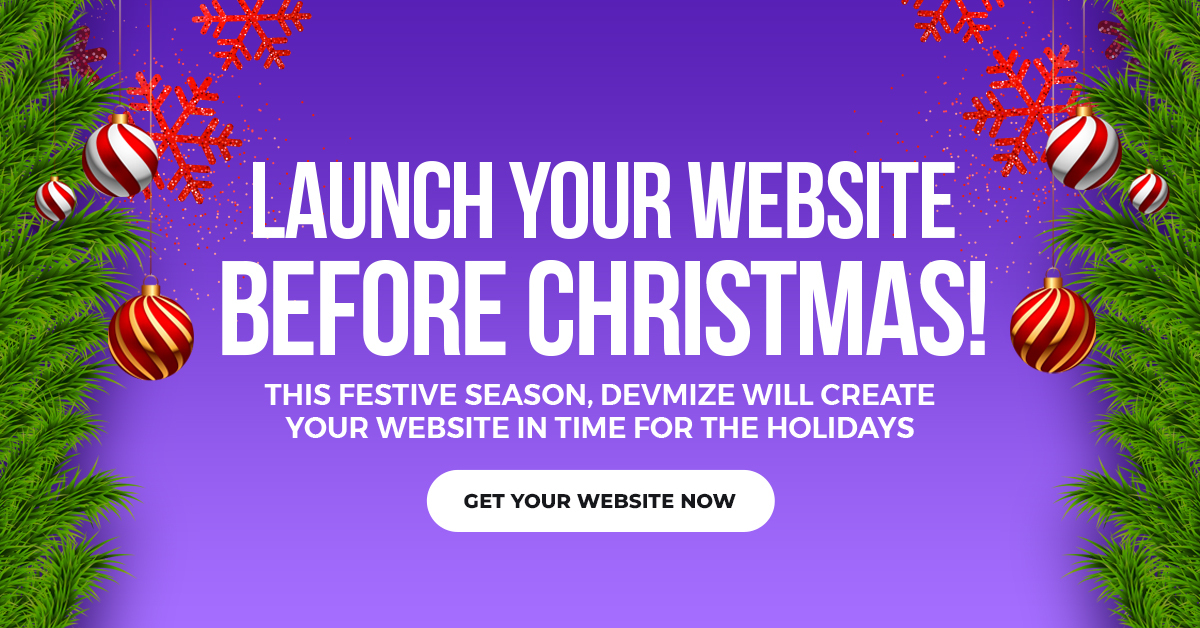What is The Difference Between Organic and Paid Social Media

Discover the key differences between organic and paid social media. Learn strategies, benefits, and tips to boost engagement, traffic, and ROI in 2025.
The Evolving Social Media Landscape in 2025
Social media has transformed into a critical marketing channel for businesses of all sizes. Whether you are a small business owner or a digital marketer, understanding the difference between organic and paid social media is crucial to building a strong online presence.
Organic social media focuses on building relationships, trust, and engagement with your audience without paying for exposure. In contrast, paid social media leverages advertisements, boosted posts, and targeted campaigns to reach a wider audience instantly.
At Dev Mize, we help brands create a balanced social media strategy, combining both organic and paid methods for maximum growth, engagement, and ROI.
What is Organic Social Media?
Organic social media refers to free strategies used to engage and grow your audience on platforms like Facebook, Instagram, TikTok, LinkedIn, and Twitter. It relies on creating content that resonates with your audience, encourages sharing, and generates natural engagement.
Key Components of Organic Social Media
- Content Creation – Sharing high-quality posts, videos, reels, and stories that add value to your audience.
- Community Engagement – Responding to comments, messages, and user-generated content to build trust and relationships.
- Consistency – Posting regularly to maintain visibility and authority within your niche.
- Hashtag Strategy – Using relevant and trending hashtags to increase organic reach.
- Influencer Collaboration – Partnering with influencers organically to expand reach without paid promotions.
- SEO-Driven Captions – Optimizing post captions with long-tail keywords to appear in search and social discovery.
- Insights Monitoring – Analyzing engagement metrics like likes, shares, comments, and profile visits to refine strategy.
Dev Mize specializes in creating organic social media campaigns that grow followers, increase engagement, and build long-term brand credibility.
What is Paid Social Media?
Paid social media involves advertising on social platforms to promote your content, products, or services. It allows brands to reach a targeted audience quickly and drive measurable results.
Key Components of Paid Social Media
- Social Ads – Sponsored content on platforms such as Facebook Ads, Instagram Ads, LinkedIn Ads, or TikTok Ads.
- Audience Targeting – Reaching specific demographics, interests, behaviors, or locations to maximize conversions.
- Budget Allocation – Setting a budget for campaigns to control spending while optimizing ROI.
- Campaign Optimization – Monitoring ad performance and adjusting targeting, creatives, or bidding strategies.
- Retargeting – Displaying ads to users who have previously interacted with your brand to encourage conversion.
- Conversion Tracking – Using tools like Facebook Pixel or Google Analytics to measure click-through rates, sales, or leads.
- Promotional Offers – Driving sales with limited-time deals, discounts, or giveaways via paid promotions.
At Dev Mize, we design paid social media campaigns that are data-driven, cost-effective, and focused on measurable business outcomes.
Is Organic Social Media Free?
Organic social media is technically free because you don't need to pay platforms like Facebook, Instagram, or LinkedIn to post content. Instead, it focuses on building genuine relationships, brand trust, and engagement without direct advertising costs. However, the effort, consistency, and time required to grow organically can be considered indirect investments. For businesses like Dev Mize, organic social media helps build long-term credibility and a loyal audience without heavy ad spending.
Features of Organic Social Media:
- No Direct Cost
Posting, sharing, and engaging on platforms doesn't require payment. The real investment lies in creativity and consistency. - Relationship Building
Organic strategies focus on trust and human connection, helping brands like Dev Mize connect with audiences authentically. - Long-Term Growth
While slower than paid ads, organic growth creates lasting brand visibility and credibility over time. - Algorithm Driven Reach
Success depends on how well your content aligns with platform algorithms, making quality and engagement key. - High ROI Over Time
Even without ad spend, strong organic presence delivers long-term traffic, leads, and conversions.
Benefits of Organic Social Media
Organic social media offers long-term value by strengthening brand credibility, building authentic connections, and driving consistent engagement without direct ad spend. Unlike paid campaigns, it focuses on trust, loyalty, and community building. By investing in time, creativity, and consistency, brands gain sustainable visibility, higher ROI, and stronger audience relationships that last.
Builds Trust and Brand Authority
Organic social media helps establish credibility since followers know your engagement and growth are genuine, not bought. Consistent posting positions your brand as an authority in your niche.
Cost-Effective Marketing Strategy
No direct costs are required for posting and engagement, making organic content one of the most budget-friendly methods to reach and nurture your audience.
Strengthens Customer Relationships
By interacting authentically—through comments, DMs, and shares—businesses create loyal customers who feel valued and connected to the brand.
Long-Term and Sustainable Growth
Unlike paid ads that stop delivering results once the budget ends, organic strategies ensure steady, compounding growth over time.
Increases Engagement and Visibility
High-quality organic posts can go viral, reaching wider audiences through shares, likes, and algorithm-driven visibility without any advertising costs.
Better ROI in the Long Run
Though slower to scale, organic strategies deliver sustainable returns by nurturing a loyal audience that continues engaging with your brand over time.
Major Differences Between Organic and Paid Social Media
Understanding the difference helps businesses allocate resources effectively and create a comprehensive social media strategy.
Cost Factor
- Organic: Free, requiring only time and content creation effort.
- Paid: Requires financial investment for ads, boosts, and promotions.
Speed of Results
- Organic: Slow, builds long-term engagement over weeks or months.
- Paid: Immediate visibility and faster results for traffic and conversions.
Audience Reach
- Organic: Limited to followers, friends, and users who discover your content through shares or hashtags.
- Paid: Can target a highly specific audience beyond existing followers.
Engagement Type
- Organic: Focuses on meaningful interactions, trust, and brand loyalty.
- Paid: Focuses on clicks, impressions, and conversions, often for short-term campaigns.
Longevity and Sustainability
- Organic: Builds sustainable growth, brand authority, and long-term audience trust.
- Paid: Offers short-term visibility and requires ongoing investment to maintain results.
Analytics and Insights
- Organic: Measured through likes, shares, comments, and profile growth.
- Paid: Measured through detailed campaign metrics like ROI, CTR, CPC, and conversion rate.
Best Use Cases
- Organic: Community building, thought leadership, brand awareness.
- Paid: Product launches, promotions, lead generation, event marketing.
How to Combine Organic and Paid Social Media for Maximum Impact
Combining both approaches ensures a balanced strategy that drives both short-term and long-term results.
Use Organic for Relationship Building
Post high-quality content to engage your audience and build credibility. This increases trust, which makes paid ads more effective when launched.
Use Paid to Amplify High-Performing Content
Boost posts or run ads for content that already resonates organically to reach new audiences and maximize ROI.
Segment Campaigns Based on Goals
Use organic strategies for brand awareness and paid campaigns for conversions, leads, and sales.
Test and Optimize Continuously
Analyze metrics from both organic and paid campaigns to refine strategies and improve performance.
Leverage Cross-Platform Integration
Integrate organic posts with paid campaigns across platforms like Instagram, Facebook, LinkedIn, and TikTok for consistent messaging and audience reinforcement.
Common Mistakes in Organic vs Paid Social Media
Understanding mistakes helps businesses avoid wasting time and money.
Over-Relying on Organic Growth
Expecting rapid results without boosting posts can slow growth. Organic strategies require patience and consistency.
Ignoring Audience Targeting in Paid Ads
Poor targeting leads to low engagement and wasted ad spend. Use detailed demographics, interests, and behaviors for precision.
Inconsistent Posting
Inconsistent organic posting reduces audience engagement and lowers algorithmic visibility.
Not Measuring ROI
Focusing only on likes or impressions without tracking conversions or revenue reduces campaign effectiveness.
Neglecting Content Quality
Both organic and paid campaigns require high-quality visuals, captions, and messaging to attract and retain attention.
Tools and Techniques to Optimize Both Organic and Paid Social Media
Social Media Management Platforms
Tools like Hootsuite, Buffer, and Sprout Social allow scheduling, engagement monitoring, and analytics tracking.
Analytics Tools
Use Meta Business Suite, TikTok Analytics, and Google Analytics to measure performance and refine campaigns.
Paid Advertising Platforms
Facebook Ads Manager, LinkedIn Campaign Manager, TikTok Ads Manager, and Instagram Promotions are essential for paid campaigns.
Content Creation Tools
Canva, Adobe Creative Cloud, and CapCut help create engaging visuals and video content for both organic and paid strategies.
Audience Research Tools
Tools like SEMrush, BuzzSumo, and Social Blade help identify trending topics, competitors, and potential influencers.
Benefits of Using Both Organic and Paid Social Media
- Maximized Reach – Paid campaigns extend the reach of organic content to new audiences.
- Higher Engagement – Organic content builds trust, while paid campaigns drive clicks and conversions.
- Improved Brand Authority – A strong organic presence supports credibility, making paid ads more persuasive.
- Cost Efficiency – Data from organic engagement informs smarter paid campaigns.
- Better Customer Insights – Combining analytics from both approaches helps understand audience behavior and preferences.
Why Choose Dev Mize for Social Media Strategy
At Dev Mize, we specialize in building comprehensive social media strategies that integrate organic and paid methods seamlessly. Our services include:
- Custom content creation and organic growth strategies
- Paid campaign management for platforms like Instagram, Facebook, TikTok, and LinkedIn
- Audience targeting, analytics tracking, and ROI optimization
- Long-term brand building and engagement strategies
With Dev Mize, businesses can achieve measurable results, higher engagement, and better conversions without guesswork.
Future Trends: Organic and Paid Social Media in 2025
- AI-Powered Content Creation – Automate captions, graphics, and video content for higher efficiency.
- Short-Form Video Dominance – TikTok, Instagram Reels, and YouTube Shorts drive both organic and paid engagement.
- Conversational Commerce – Integrating chatbots and direct messaging for instant sales.
- Micro-Influencer Partnerships – Combining organic authenticity with paid amplification for targeted reach.
- Augmented Reality Experiences – Interactive ads and organic content to enhance engagement and conversions.
Conclusion:
Understanding the difference between organic and paid social media is critical for 2025 marketing success. Organic strategies build long-term trust, community, and brand authority, while paid campaigns accelerate reach, conversions, and ROI.
By combining both approaches strategically and leveraging expert services like Dev Mize, businesses can achieve sustainable growth, measurable results, and a competitive edge in the ever-evolving social media landscape.


